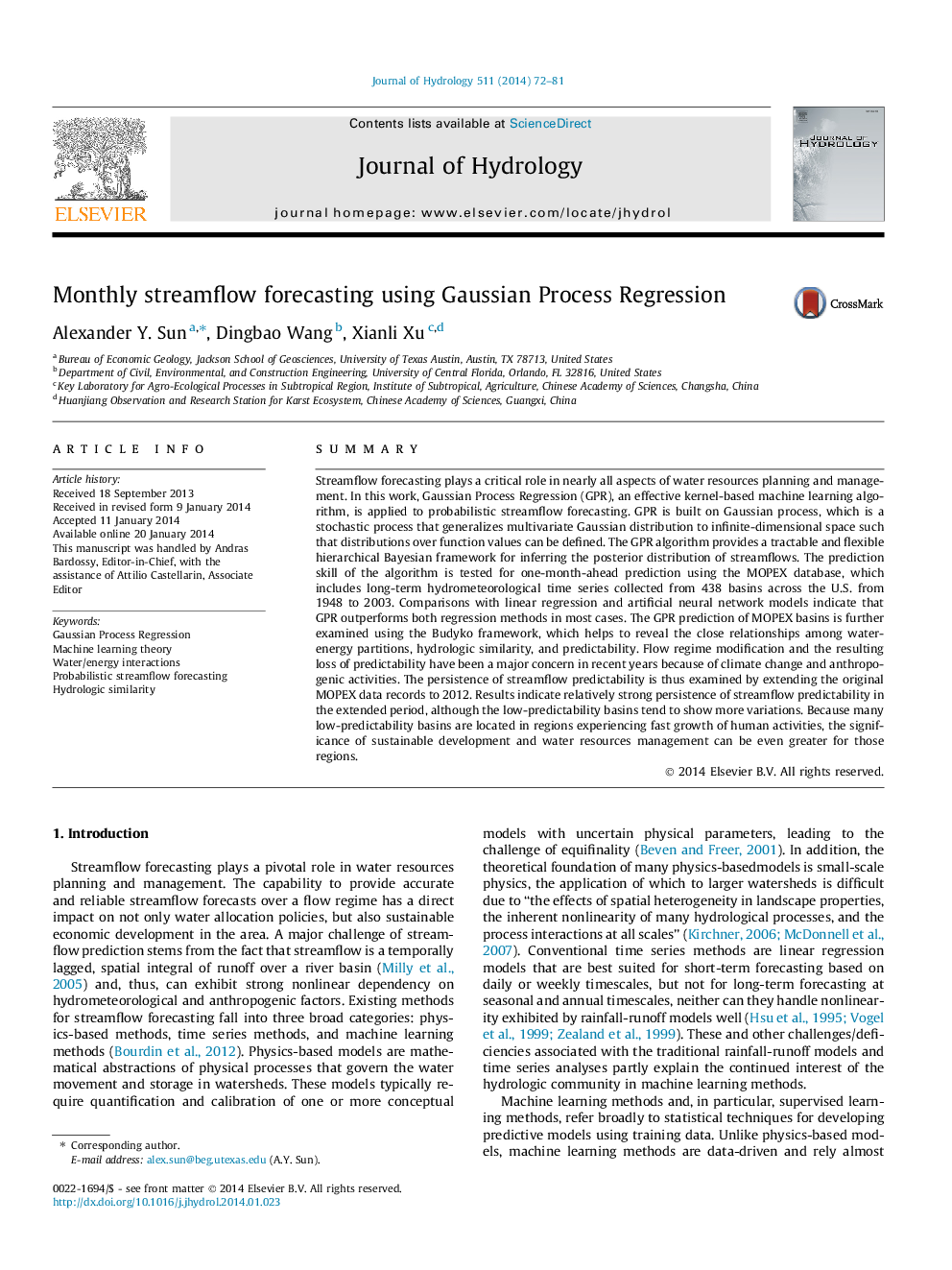| کد مقاله | کد نشریه | سال انتشار | مقاله انگلیسی | نسخه تمام متن |
|---|---|---|---|---|
| 6413273 | 1629937 | 2014 | 10 صفحه PDF | دانلود رایگان |
- Gaussian Process Regression (GPR) is applied to monthly streamflow forecasting.
- The efficacy of GPR is demonstrated for over 400 stations in the continental U.S.
- Budyko framework is used to examine dependence of prediction skill on aridity index.
SummaryStreamflow forecasting plays a critical role in nearly all aspects of water resources planning and management. In this work, Gaussian Process Regression (GPR), an effective kernel-based machine learning algorithm, is applied to probabilistic streamflow forecasting. GPR is built on Gaussian process, which is a stochastic process that generalizes multivariate Gaussian distribution to infinite-dimensional space such that distributions over function values can be defined. The GPR algorithm provides a tractable and flexible hierarchical Bayesian framework for inferring the posterior distribution of streamflows. The prediction skill of the algorithm is tested for one-month-ahead prediction using the MOPEX database, which includes long-term hydrometeorological time series collected from 438 basins across the U.S. from 1948 to 2003. Comparisons with linear regression and artificial neural network models indicate that GPR outperforms both regression methods in most cases. The GPR prediction of MOPEX basins is further examined using the Budyko framework, which helps to reveal the close relationships among water-energy partitions, hydrologic similarity, and predictability. Flow regime modification and the resulting loss of predictability have been a major concern in recent years because of climate change and anthropogenic activities. The persistence of streamflow predictability is thus examined by extending the original MOPEX data records to 2012. Results indicate relatively strong persistence of streamflow predictability in the extended period, although the low-predictability basins tend to show more variations. Because many low-predictability basins are located in regions experiencing fast growth of human activities, the significance of sustainable development and water resources management can be even greater for those regions.
Journal: Journal of Hydrology - Volume 511, 16 April 2014, Pages 72-81
